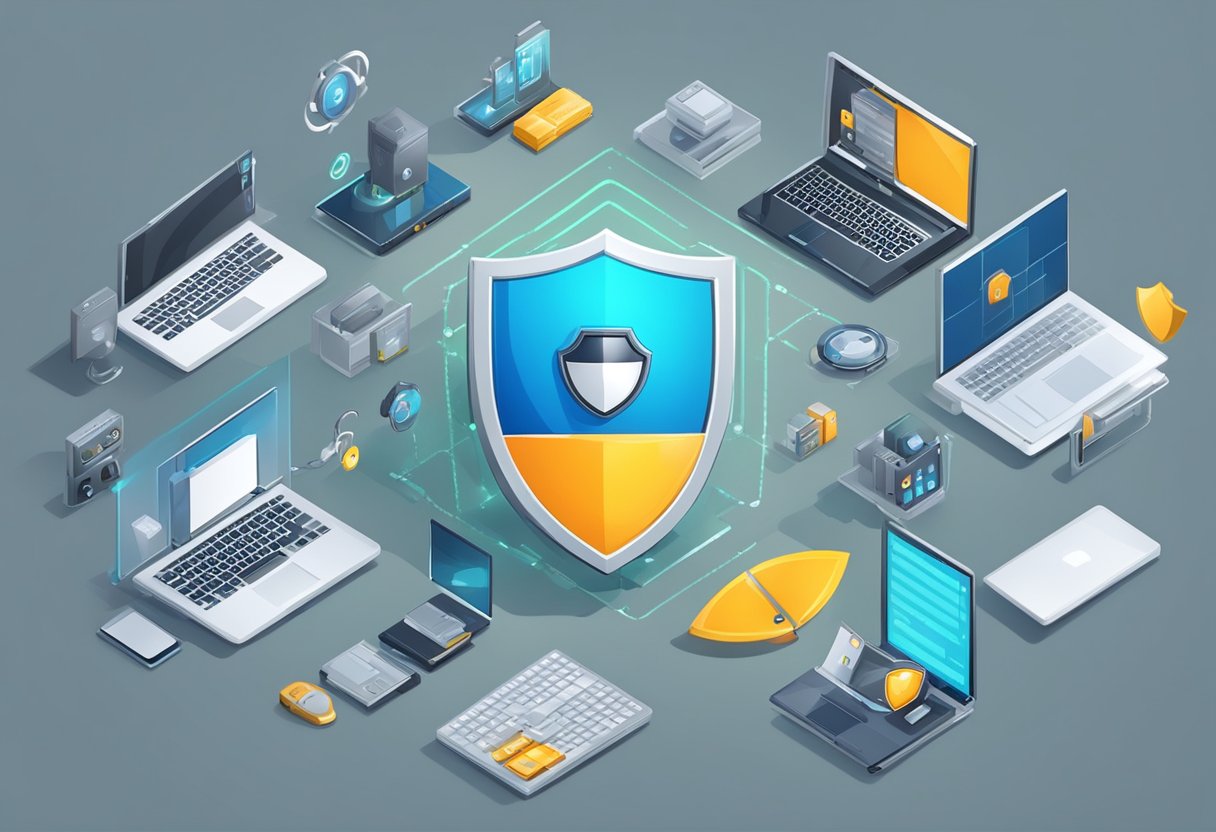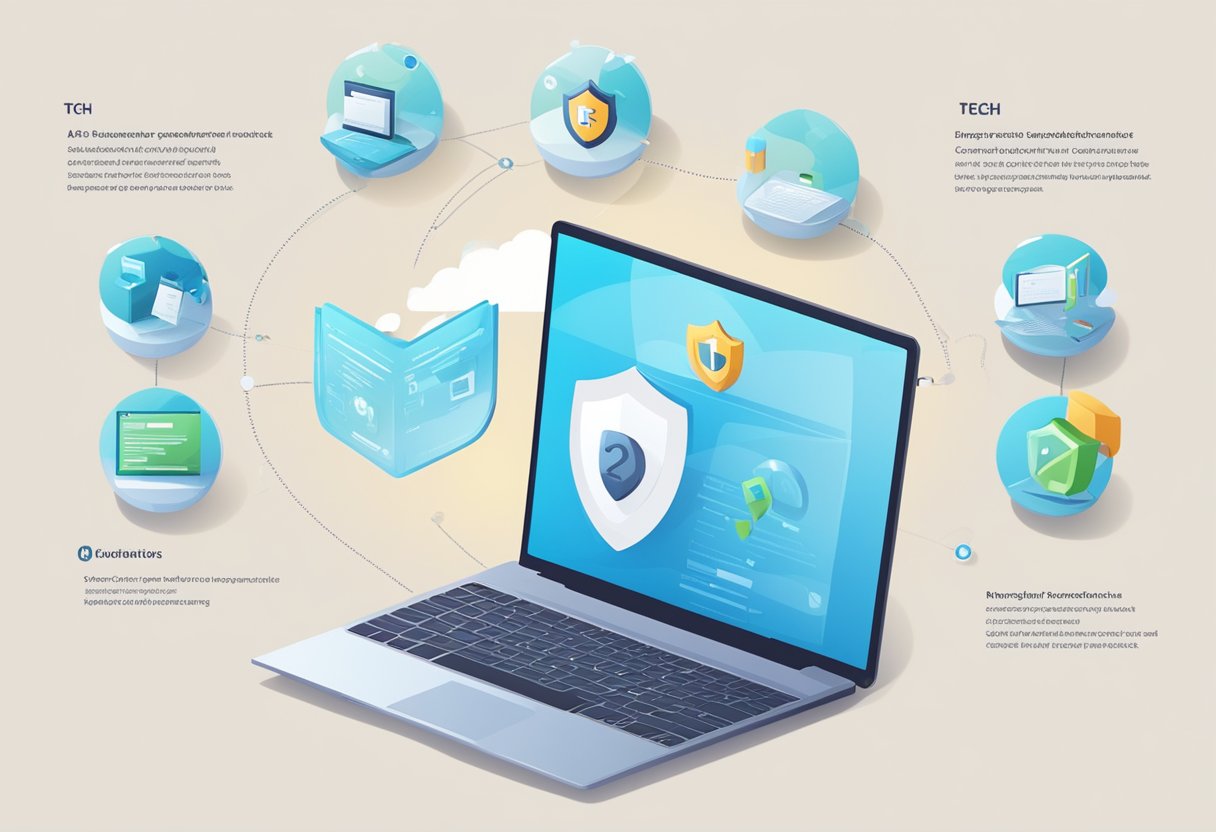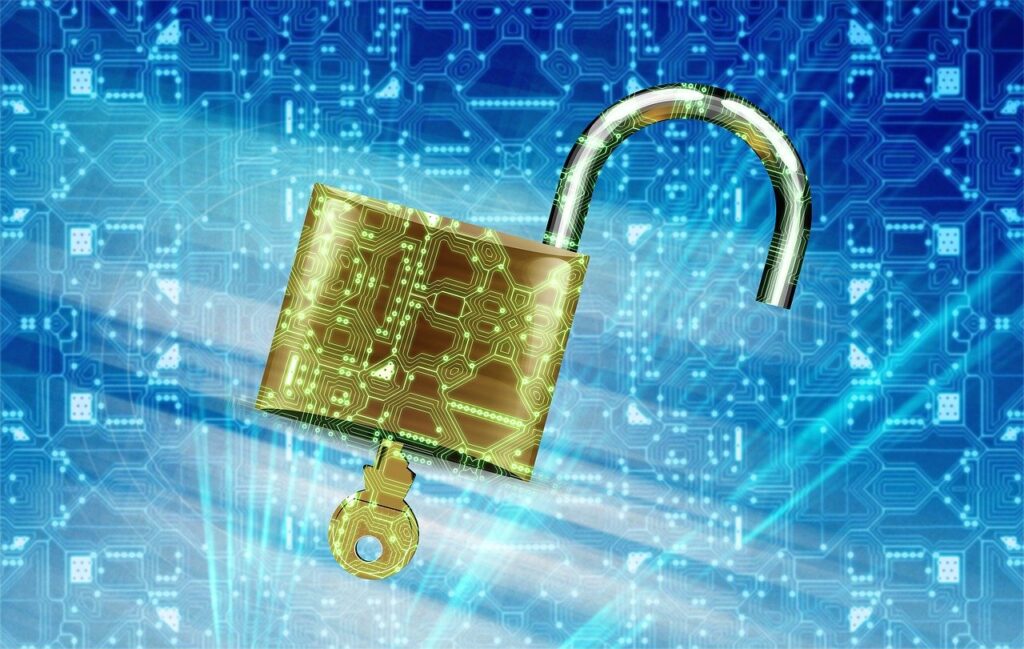The world is becoming increasingly reliant on technology, and with that reliance comes the need for increased security measures. Protecting your tech is essential for safeguarding your personal information, financial data, and sensitive documents. In this article, we will provide our top recommendations for protecting your tech.

The first recommendation is to use strong passwords. Weak passwords are one of the easiest ways for hackers to gain access to your accounts and devices. A strong password should be at least 12 characters long and include a mix of upper and lowercase letters, numbers, and symbols. It is also recommended to use a different password for each account and to change them regularly.
Another recommendation is to keep your software up to date. Software updates often include security patches that address vulnerabilities that hackers can exploit. It is important to install updates as soon as they become available to ensure that your devices are protected. Additionally, it is recommended to use antivirus software and keep it updated to protect against malware and other threats.
Understanding the Importance of Tech Protection
https://www.youtube.com/watch?v=D55ctBYF3AY&embed=true
In today’s digital age, technology has become an integral part of our lives. We use it for communication, entertainment, work, and more. However, with the increasing use of technology comes a growing concern for its protection. Cybersecurity threats are becoming more sophisticated, and personal information is at risk of being compromised.
Tech protection is crucial for safeguarding personal information and preventing cyber attacks. The consequences of a successful attack can be devastating, ranging from financial loss to identity theft. Therefore, it is essential to take the necessary steps to protect tech devices and personal information.
One of the most critical aspects of tech protection is cybersecurity. Cybersecurity refers to the protection of devices, networks, and sensitive information from unauthorized access, theft, or damage. It involves implementing measures such as firewalls, antivirus software, and encryption to prevent cyber attacks.
Another crucial aspect of tech protection is protecting personal information. Personal information includes any information that can be used to identify an individual, such as name, address, phone number, and social security number. Protecting personal information involves implementing measures such as creating strong passwords, avoiding public Wi-Fi networks, and being cautious of phishing scams.
Overall, understanding the importance of tech protection is essential in today’s digital age. By implementing cybersecurity measures and protecting personal information, individuals can safeguard their tech devices and prevent cyber attacks.
Securing Your Software
https://www.youtube.com/watch?v=Dg-hD4HHKT8&embed=true
One of the most important steps you can take to protect your tech is to secure your software. Here are some tips to help you keep your software safe:
-
Install software from trusted sources: Only install software from reputable sources. Be wary of downloading software from unknown or untrusted websites, as this can put your computer at risk of malware and other security threats.
-
Keep your software up to date: Make sure your software is always up to date with the latest security patches and updates. This can help prevent security vulnerabilities that can be exploited by hackers.
-
Use anti-malware software: Install anti-malware software and keep it up to date. This software can help protect your computer from viruses, spyware, and other malicious software.
-
Back up your data regularly: Back up your data regularly to protect against data loss in the event of a security incident.
By following these tips, you can help keep your software secure and protect your tech from security threats.
Protecting Your Intellectual Property
https://www.youtube.com/watch?v=hU1jnUdZmNs&embed=true
Protecting intellectual property (IP) is crucial for any tech company. Here are some recommendations to safeguard your IP:
1. File Patents
Filing patents is the most common way to protect IP. It provides legal protection for your inventions and prevents others from using, selling, or manufacturing them without your permission. However, it can be a lengthy and expensive process, so it’s important to carefully consider whether it’s worth it.
2. Implement Nondisclosure Agreements (NDAs)
NDAs are legal agreements that prohibit individuals or entities from disclosing confidential information. They are essential for protecting trade secrets, such as proprietary software algorithms or customer data. It’s important to ensure that all employees, contractors, and vendors sign NDAs before accessing sensitive information.
3. Establish IP Policies
Establishing clear IP policies is essential for protecting your company’s intellectual property. These policies should outline what information is considered confidential, how it should be handled, and who has access to it. They should also include guidelines for employees on how to identify and report any potential IP violations.
4. Establish Governance Practices
Establishing strong governance practices is crucial for protecting IP. This includes implementing access controls, monitoring and auditing systems, and performing regular risk assessments. It’s also important to ensure that all employees are trained on IP protection best practices and that the company has a plan in place for responding to any potential IP breaches.
By implementing these recommendations, tech companies can better protect their valuable intellectual property.
Effective Password Management
https://www.youtube.com/watch?v=9fR4Go5VwiQ&embed=true
One of the most important steps in protecting your tech is to use strong and unique passwords for all your accounts. However, managing multiple passwords can be a challenge, especially if you have dozens or even hundreds of accounts. That’s where password managers come in.
A password manager is a tool that securely stores all your passwords in an encrypted database. You only need to remember one master password to access the database, and the password manager can even generate strong, random passwords for you.
There are several password managers available, each with its own set of features and pricing plans. Some popular options include:
- 1Password: A highly rated password manager that offers a variety of features, including password generation, autofill, and secure sharing.
- Dashlane: Another popular password manager that offers similar features to 1Password, as well as a built-in VPN and dark web monitoring.
- LastPass: A free password manager that offers basic password management features, as well as premium plans with advanced features like emergency access and priority tech support.
When choosing a password manager, it’s important to consider factors like security, ease of use, and compatibility with your devices and web browsers. You should also make sure to choose a strong master password and enable two-factor authentication for added security.
In addition to using a password manager, there are other best practices for effective password management, such as:
- Using unique passwords for each account
- Avoiding common passwords like “password” or “123456”
- Changing passwords regularly
- Being cautious of phishing scams that try to steal your passwords
By following these tips and using a password manager, you can protect your tech and keep your accounts secure.
Safeguarding Your Devices
https://www.youtube.com/watch?v=d2bJVKcIEg0&embed=true
Protecting your devices from unauthorized access is crucial in preventing data breaches and identity theft. Here are some top recommendations for safeguarding your devices:
1. Set Strong Passwords
Ensure that all your devices are password-protected with strong passwords. Avoid using common passwords, such as “123456” or “password.” Instead, use a combination of uppercase and lowercase letters, numbers, and symbols to create a unique and strong password.
2. Enable Two-Factor Authentication
Two-factor authentication adds an extra layer of security to your devices by requiring a second form of verification, such as a fingerprint or a text message code, in addition to your password. Enable two-factor authentication on all your devices to prevent unauthorized access.
3. Keep Your Devices Updated
Make sure that your devices are running the latest software updates and security patches. These updates often include bug fixes and security enhancements that can protect your devices from vulnerabilities.
4. Use Antivirus Software
Install reputable antivirus software on your devices to protect against malware and viruses. Regularly scan your devices for threats and keep your antivirus software updated.
5. Be Cautious of Public Wi-Fi
Avoid using public Wi-Fi networks when possible, as they can be vulnerable to hacking. If you must use public Wi-Fi, use a virtual private network (VPN) to encrypt your internet traffic and protect your data.
6. Use Encryption
Enable encryption on your devices to protect your data in case your device is lost or stolen. Encryption scrambles your data so that it can only be accessed with a decryption key.
By following these recommendations, you can safeguard your devices and protect your sensitive information from unauthorized access.
Data Protection and Encryption
https://www.youtube.com/watch?v=xx3Eud2N3no&embed=true
Data protection and encryption are essential components of any tech security strategy. With the increasing amount of sensitive information being stored online, it is crucial to safeguard this data from cyber threats and unauthorized access.
One of the most effective ways to protect data is through encryption. Encryption is the process of converting data into a code, which can only be accessed with a decryption key. This ensures that even if someone gains access to the data, they will not be able to read it without the key.
There are several different types of encryption, including symmetric encryption, asymmetric encryption, and hashing. Symmetric encryption involves using the same key to encrypt and decrypt data, while asymmetric encryption uses different keys for each process. Hashing is a one-way encryption process that converts data into a fixed-length string of characters.
In addition to encryption, it is also important to ensure that data is stored securely. This can be achieved through measures such as password protection, firewalls, and secure storage facilities. It is also important to regularly back up data to prevent loss in the event of a cyber attack or other disaster.
Overall, data protection and encryption are critical components of any tech security strategy. By implementing these measures, individuals and businesses can ensure that their sensitive information remains secure and protected from cyber threats.
Dealing with Cyber Threats
https://www.youtube.com/watch?v=wLgtRQHcUqQ&embed=true
Protecting your tech from cyber threats is crucial in today’s digital age. Cybercriminals are constantly finding new ways to exploit vulnerabilities in your system, and ransomware attacks are becoming more common. It’s important to take proactive steps to protect your devices and data from potential threats.
One way to protect your tech is by using antivirus and anti-malware software. These programs can detect and remove malicious software, such as viruses and spyware, that can harm your system. It’s important to keep your antivirus software up-to-date and run regular scans to ensure your system is protected.
Another way to protect your tech is by using strong passwords. Cybercriminals often use software that generates random and known passwords to try to guess your password. Using a strong, unique password for each account can help prevent unauthorized access to your data. It’s also important to enable two-factor authentication whenever possible.
Hackers are another common threat to your tech. They can gain access to your system through vulnerabilities in your software or by tricking you into downloading malicious software. Keeping your software up-to-date and being cautious when downloading files can help protect your system from hackers.
Monitoring your system for suspicious activity is also important. This can include monitoring network traffic, checking for unusual login attempts, and reviewing system logs. If you notice any suspicious activity, it’s important to take action immediately to prevent further damage.
In summary, protecting your tech from cyber threats requires a proactive approach. Using antivirus software, strong passwords, and monitoring your system for suspicious activity can help prevent cybercriminals, ransomware, hackers, and other threats from compromising your devices and data.
Best Practices for Tech Protection
https://www.youtube.com/watch?v=QoPSzGc599g&embed=true
Protecting your tech is essential to keep your personal and business information safe from cyber threats. Here are some best practices to help you secure your tech:
Use Strong Passwords
One of the simplest yet most effective ways to protect your tech is to use strong passwords. Use a combination of upper and lower case letters, numbers, and special characters. Avoid using the same password for multiple accounts. Consider using a password manager to help you generate and store your passwords securely.
Keep Software Up-to-Date
Keeping your software up-to-date is crucial to protect your tech from security vulnerabilities. Regularly check for software updates and install them as soon as they become available. This includes operating systems, anti-virus software, and other applications.
Enable Two-Factor Authentication
Two-factor authentication (2FA) adds an extra layer of security to your accounts by requiring a second form of authentication, such as a code sent to your phone, in addition to your password. Enable 2FA wherever possible to protect your accounts from unauthorized access.
Conduct Regular Audits
Conducting regular audits of your tech can help you identify and address security vulnerabilities. Check your firewall settings, review your network logs, and run anti-virus scans to ensure that your tech is secure.
Protect Your Identity
Protecting your identity is crucial to prevent identity theft and other cyber crimes. Use a reputable identity protection service to monitor your personal information and alert you to any suspicious activity.
By following these best practices, you can help protect your tech from cyber threats and keep your personal and business information safe.
Leveraging Automation for Security
https://www.youtube.com/watch?v=upUaQFsTpKc&embed=true
With the increasing complexity of security threats, leveraging automation for security has become a top priority for many organizations. Automation can help improve the efficiency and effectiveness of security operations, allowing security teams to focus on more strategic tasks.
One area where automation can be particularly beneficial is in the detection and response to security incidents. By automating incident response workflows, organizations can reduce the time it takes to detect and respond to threats, minimizing the potential impact of an attack. This can be achieved through the use of Security Orchestration, Automation, and Response (SOAR) platforms, which can automate the collection, analysis, and response to security incidents.
Another area where automation can be useful is in managing security policies and configurations. By automating the enforcement of security policies, organizations can ensure that their systems and applications are configured correctly, reducing the risk of misconfigurations that could lead to security vulnerabilities. This can be achieved through the use of Configuration Management tools, which can automate the deployment and management of security policies and configurations.
Automation can also be used to improve the security of mobile applications. With the increasing use of mobile devices in the workplace, securing mobile applications has become a critical concern for many organizations. By leveraging automation, organizations can ensure that their mobile applications are secure and compliant with industry standards. For example, Google Play Protect uses automation to scan apps for malware and other security threats, helping to protect users from potential security risks.
In conclusion, leveraging automation for security can help organizations improve the efficiency and effectiveness of their security operations, reducing the risk of security incidents and minimizing their impact. By automating incident response workflows, managing security policies and configurations, and securing mobile applications, organizations can enhance their overall security posture and better protect their assets.
Frequently Asked Questions

What are the top cyber security tips for students?
Students can take several steps to protect their personal information and devices from cyber threats. Some of the top cyber security tips for students include:
- Keeping software up-to-date on all devices
- Using strong and unique passwords for each account
- Avoiding public Wi-Fi networks when accessing sensitive information
- Being cautious when opening email attachments or clicking on links
- Using two-factor authentication whenever possible
What are the best practices for protecting business technology?
Businesses can implement several best practices to protect their technology and data from cyber threats. Some of the best practices include:
- Conducting regular security assessments and audits
- Implementing strong password policies and multi-factor authentication
- Providing regular security training to employees
- Limiting access to sensitive data on a need-to-know basis
- Encrypting sensitive data both in transit and at rest
How can I secure my account from hackers?
To secure your account from hackers, you can take several steps, including:
- Using strong and unique passwords
- Enabling two-factor authentication
- Monitoring your account for suspicious activity
- Being cautious when opening email attachments or clicking on links
- Avoiding public Wi-Fi networks when accessing sensitive information
What are the most effective ways to protect computer files?
To protect computer files, you can take several steps, including:
- Regularly backing up important files
- Using anti-virus and anti-malware software
- Keeping software up-to-date on all devices
- Encrypting sensitive files both in transit and at rest
- Being cautious when downloading files from the internet
What information is most important to protect?
All personal and sensitive information should be protected, including:
- Social Security numbers
- Bank account and credit card numbers
- Passwords and login credentials
- Medical records
- Personal identification information
What are the best cyber security awareness tips for employees?
Employees can help protect their company’s data and technology by following these cyber security awareness tips:
- Being cautious when opening email attachments or clicking on links
- Using strong and unique passwords
- Enabling two-factor authentication
- Reporting suspicious activity to IT or security teams
- Regularly updating software and devices

